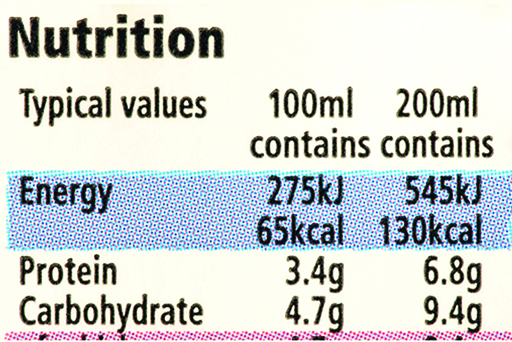2 Calories and joules
You probably calculated that you got only 2–3 kcal of energy from your peanut. If so, you only used well under half of the energy of the peanut to heat your water. If you ate the peanut, your body would use a much higher percentage of the energy.
If you compare the values on a food label, you will see the numerical value for the energy given in kilojoules is much bigger than the numerical value given in kilocalories. So, the kilojoule is a smaller unit (Figure 6).
Activity 3 Unit conversion calculation
For this activity you will need a calculator.
Work out how many kilojoules there are in one kilocalorie, based on the numbers from a food label. (Hint: you need to enter a number given in kJ and divide it by the equivalent number in kcal.)
What is the conversion factor? Write two or three sentences in the box below. Click ‘Save’ when you are satisfied with what you have written.
Answer
To convert kJ to kcal, you need to divide by 4.2; to convert kcal to kJ, you need to multiply by 4.2.

